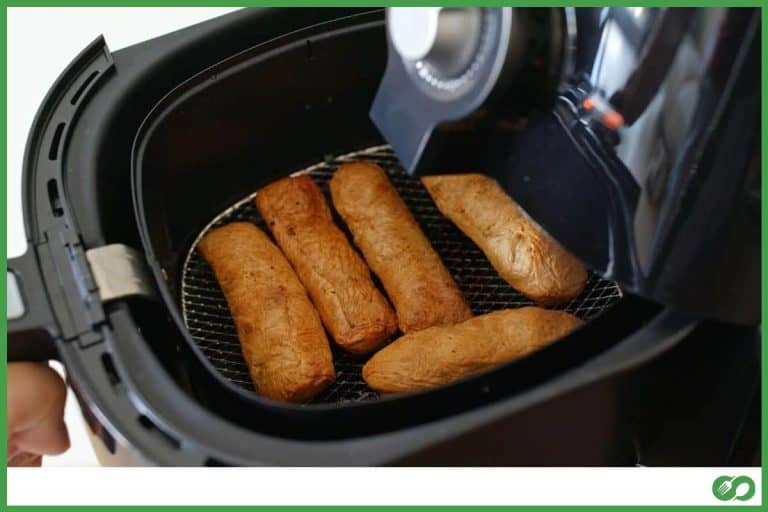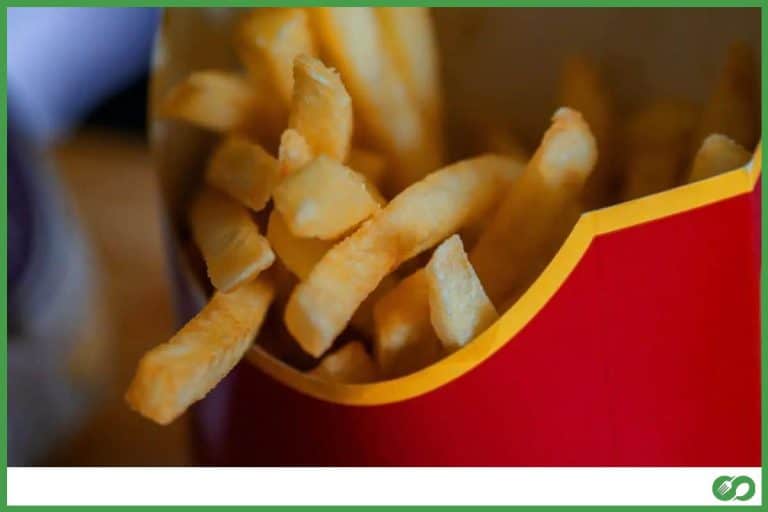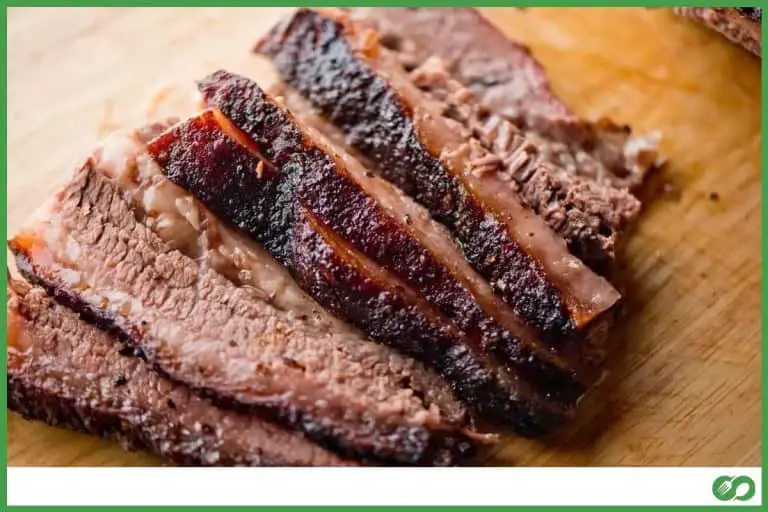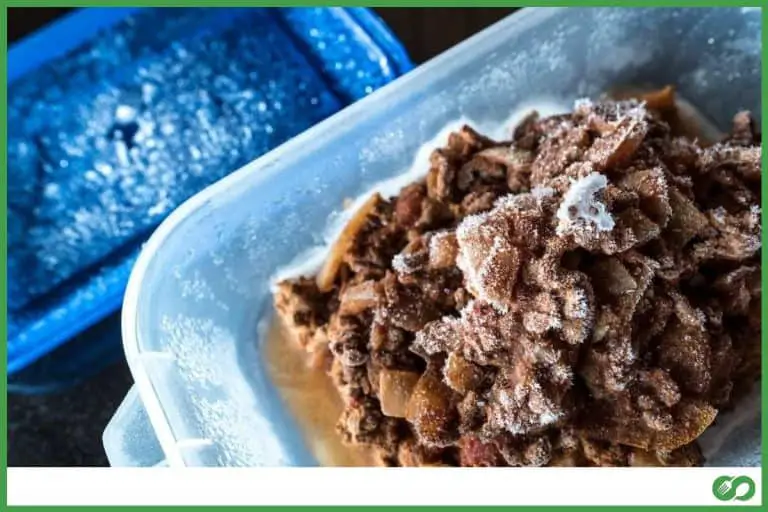Can You Reheat Heavy Cream Sauce? (For Best Results)
This post may contain affiliate links which means that, if you choose to make a purchase, I may earn a small commission at no extra cost to you.
Most of us love to dive into the dishes made with heavy cream sauce, be it our favorite pasta, lasagna, or any other delight. If you enjoy cooking at home, you must have wondered at some point to make and store this creamy relish. But can heavy cream sauce be stored? And can this sauce be reheated afterwards? We have answered all such questions for you in this article.
Can you reheat heavy cream sauce?
Heavy cream sauce is usually served fresh and hot. Reheating heavy cream sauce in the microwave oven is never advisable. Direct heat will cause the sauce to break, separating oil from rest of the ingredients. However, reheating is not entirely impossible. Heat it slowly, preferably in a hot water bath to prevent this issue of breaking and separating into oils.
Why does Heavy Cream Sauce separate into Oil?
This sauce is basically an emulsion of heavy cream, made by suspending dairy fats in water using emulsifying proteins.
Whenever emulsified fats are heated at a very fast rate, fat molecules suspended in the solution start moving faster and clumping together into fat droplets. Heating the solution also causes evaporation of water encouraging further flat droplet formation. Moreover, if emulsified fats are chilled, this may lead to the breaking of emulsion as well. This is because cooling turns fats into solids which may take very long to de-emulsify. Frozen fats would hardly de-emulsify, if at all.
This happens with the heavy cream sauce too. Upon cooling, fats in the freshly made sauce solidify and when it is reheated at high temperature they do not reabsorb into the sauce. Instead these fats break out of the emulsion as the oil you see around your sauce.
A Step by Step Guide to Reheat the Heavy Cream Sauce
If you have placed the sauce in a refrigerator and wish to reheat it, follow these steps:
- Keep the sauce outside for some time to bring it closer to room temperature, before heating it.
- Cover the sauce and place it in the microwave oven. You may set the heat to medium. After every 20 second interval, take it out from the oven and stir it thoroughly.
- A little water may also be added to achieve the desired consistency.
- Heat until it is just warm enough to be served. Do not heat for too long or the oils would separate.
Alternatively, you may also try the following method:
- Add a small amount of cold milk in the sauce and beat it until milk is dissolved well in it.
- Create a double boiler and place the sauce inside this water bath.
- Apply moderate heat and keep mixing it thoroughly until it is warm enough.
Some Quick Tips to Make Heavy Cream Sauce Suitable to Reheat
If you have a time constraint, you might be planning to make and store the heavy cream sauce. In this case, just follow a few tips mentioned below and reduce the effort required in reheating your sauce afterwards.
- Once the sauce is prepared, add whole milk to it before letting it cool down.
- Every time you reheat it, add a little roux- floor cooked in fat in the ratio 1:1. This will assure that after every heating the same consistency of sauce is obtained.
How to Thicken the Heavy Cream Sauce and Maintain its Consistency
Often while making the heavy cream sauce, you may feel that an ideal consistency is not achieved. The sauce is often less thick than expected. To thicken the sauce, you may:
Allow the sauce to reduce in volume.
- Simmer the sauce once all ingredients are mixed properly. This causes the excess sauce to evaporate. Achieving the desired consistency may require simmering for around 10 minutes to half an hour. Make sure it is simmered below boiling point.
- Do not bring it to the boiling point. As discussed above, boiling, or heating very fast would cause the sauce to separate into oil and the texture of the sauce would be ruined.
- Keep stirring the sauce. While simmering, constantly keep moving a spoon in the sauce to prevent it from burning or sticking with the bottom. A wooden spoon is ideal to be used for stirring.
Use a thickening agent
- Use a slurry of flour. Mix cold water and flour in equal parts in any container. When these are mixed together smoothly, slowly using a tablespoon add this slurry into the sauce. Stir the sauce thoroughly after adding each spoon. When the required consistency is achieved, the sauce should be simmered for around 5 to 7 minutes to reduce the taste of uncooked flour.
- Add roux to your sauce. Take flour and butter in equal quantities. In a pan, let the butter melt. Then add flour into it and stir until they are mixed perfectly. You may cook it for a few more minutes to remove the raw flavor of the flour. Roux is now ready to be whisked into the sauce. Add a small amount of roux at a time until desired thickness is obtained.
- Mix cornflour slurry with your sauce. Mix cornflour with an equal portion of cold water and stir until a uniform mixture is made. Place the sauce on medium heat and pour this slurry very slowly into the sauce while stirring it constantly. Proper stirring and slow pouring would assure no lumps are made as corn floor mixes with the sauce. The amount of this slurry can be added depending on the thickness of sauce you desire.
- Egg yolks can also help thicken the sauce. Some heavy cream sauces such as the creamy hollandaise may contain eggs. To thicken these, egg yolks may be whisked into the cream sauce. However, keep in mind that egg yolk should be separated and beaten in a separate container and mixed with the sauce afterward as 1 complete egg yolk may cause too much thickening of your sauce. Mix the yolk with the sauce slowly until you reach the required consistency.
- Sauce may be mixed with kneaded butter. Make a thick paste of flour and softened butter using both in equal parts. Using a fork, butter may be mashed into the flour forming a uniform paste. Now make small balls of this paste and put them in the simmering sauce. Keep stirring. More balls may be added until you obtain the desired thickness. Do not add several balls at a time or you won’t be able to control the thickness.
Fun Facts About Heavy Cream Sauce
Invention of cream sauce dates back to 17th century. It was invented by the financier Louis de Béchamel who was also known as chief steward to the France’s King Louis XIV.
There are different recipes for making a heavy cream sauce. The simplest one includes butter, heavy cream, and parmesan cheese. Nevertheless, a range of other ingredients like milk, garlic powder, black pepper, parsley, nutmeg, mozzarella cheese and a lot more may be added depending on your flavor and the recipe you want to make.
Some General Tips About Reheating Food
Other than the heavy cream sauce, reheating several other foods may prove to be troublesome when reheated. So, we have compiled some very useful tips to follow when reheating food.
When reheating in a microwave oven, texture of food may change a lot. Food with crispy crusts become soggy on heating. However, foods such as pasta, rice, soups, and vegetables may reheat properly in the oven.
To heat food in microwave oven, make sure to spread out the food evenly in the plate or bowl. Sprinkle some water on top to make food damp and prevent it from over drying. Cover the food properly before placing inside and try to keep stirring it every now and then. For reheating fish in an oven, it may be defrosted at room temperature initially and checked after every 30 seconds interval to assure it does not get over cooked.
If reheating food in an oven or toaster, the gentle heat will make the food ideal as before. This is a perfect way of reheating crisps and fries to obtain the crunchy texture. But if you are worried about your food being dried out, wrap it in an aluminum foil before placing inside the oven.
Reheating food on a stove works best most of the time. Since most foods are cooked on a stove, reheating on it maintains their original texture. While reheating, cover the pan with a lid and this would prevent excessive drying out as well. Yet, some foods like rice or pasta may need an extra splash of water too.
For foods such as mashed potatoes or this heavy cream sauce, which are sensitive to heat and may lose their original texture completely on exposure with heat, double boilers should be used.
Despite all these methods, some foods such as heavy cream sauce are made to be served fresh. Even though they might return to their original form on reheating, the aroma and taste of freshly made food cannot be enjoyed again.







